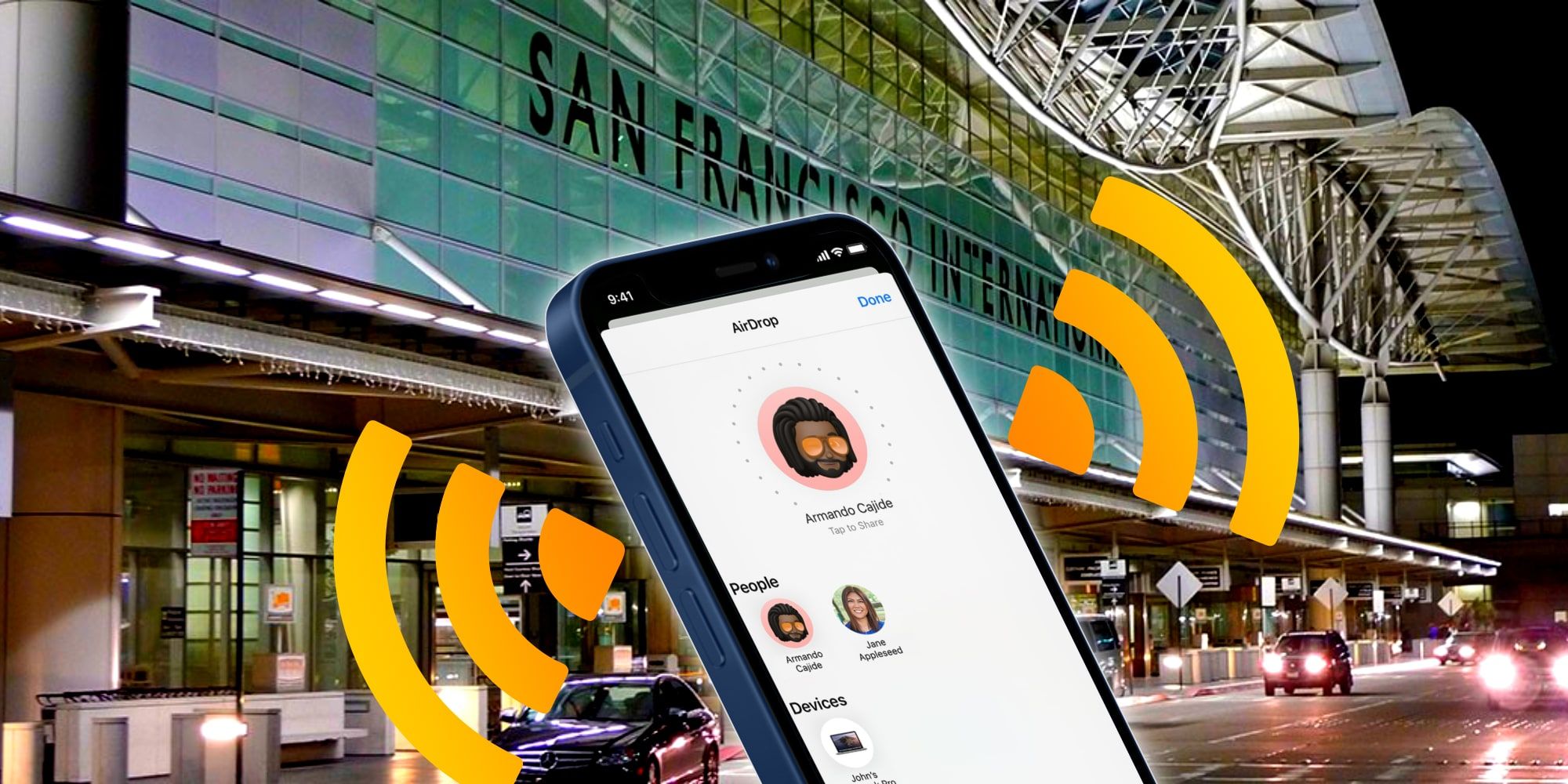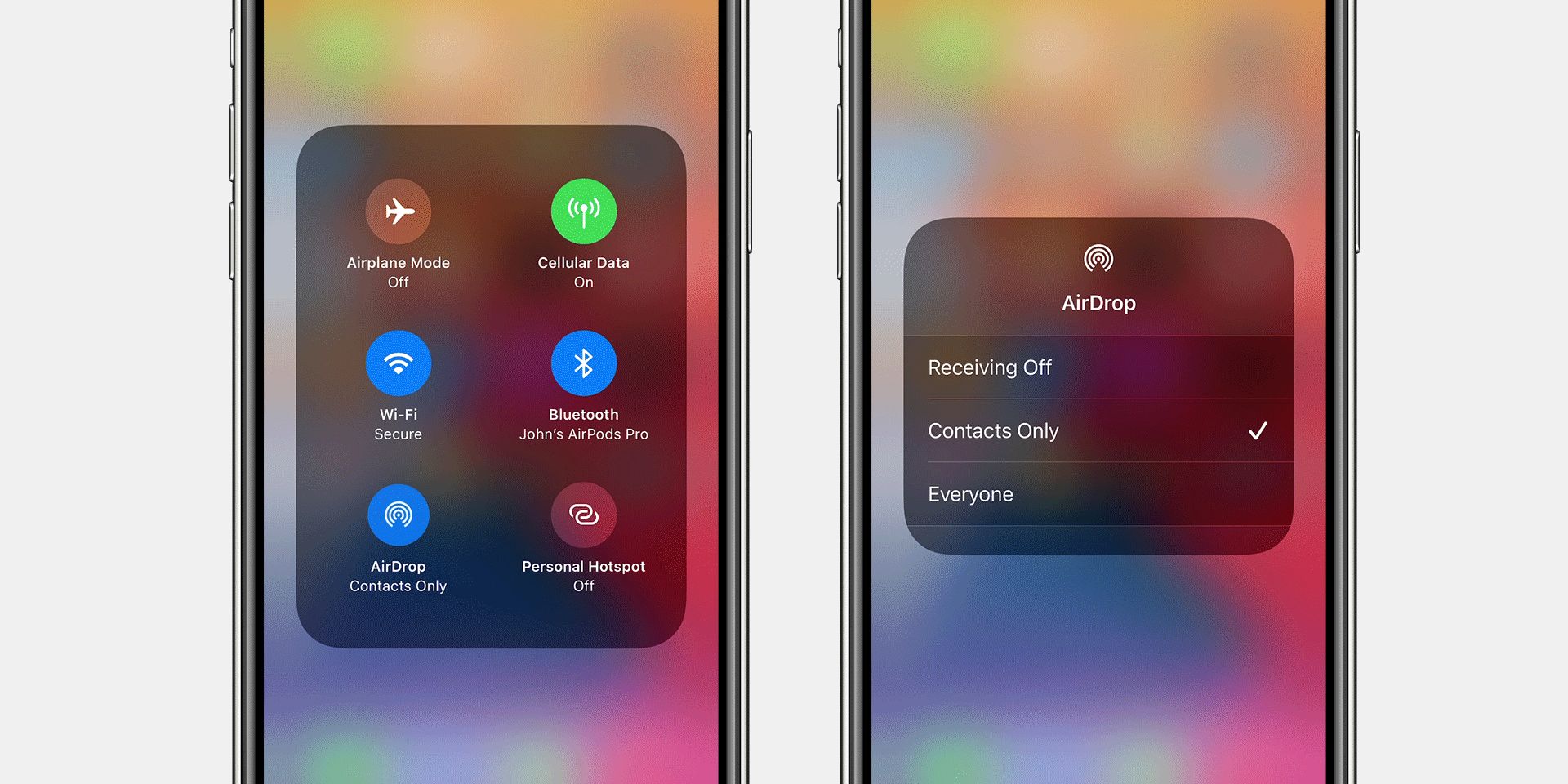
Apple's AirDrop technology was prominently featured in an unfortunate incident in which an airline passenger with an iPhone disrupted a flight, leading to all passengers being removed from the plane and causing a great inconvenience to all involved. The use of smartphones and other personal devices on a flight has become commonplace and is even encouraged for the comfort of the passenger, but Bluetooth and Wi-Fi are only allowed at certain times and that's the reason Airplane mode exists on smartphones.
AirDrop is Apple's ad hoc, peer-to-peer, file-sharing technology. That means it doesn't require internet access in order to transfer photos, videos, and other files. Although the connection is made via Wi-Fi, it is a direct, device-to-device connection with one acting as a sender and another as a receiver. Similar technology exists on other platforms via apps, but Apple integrates AirDrop into the operating systems of iPhone, iPad, and Mac, making it incredibly easy to use and universally supported among Apple device users. AirDrop also uses end-to-end encryption, so messages are protected from unwanted spying.
According to a local NBC affiliate, while on a plane at San Francisco International Airport, a teenager shared a photo of an AirSoft gun with more than one other passenger via AirDrop. Many of these air propulsion guns appear nearly identical to the more lethal variety. Naturally, this caused great concern and word spread to the flight crew, leading to the aircraft being held up, and eventually passengers had to deplane. AirDrop is only available on Apple devices, but the iPhone is so popular in the US that as much as half of the plane could have shown up as recipients.

Receiving a photo of a replica gun via AirDrop while seated on an airplane waiting for takeoff would be quite alarming, but it is easy to do. Apple's iPhone can be set to only allow AirDrop requests from those that appear in the owner's contact list, which likely would have prevented this incident from happening. Another protection is to turn off AirDrop entirely but it is so useful that the loss would be quite limiting. More interesting is that an AirDrop file appears on the recipient's device as a request with the option to accept or decline. This means those that saw the AirSoft gun, accepted a photo from someone they didn't know, a somewhat risky behavior, given what some feel compelled to share publicly.
In this case, the AirSoft gun was never on the plane and the photo was taken elsewhere. There was no explanation given via NBC's report as to why the photo was shared or why passengers accepted a file shared by a stranger. In the end, the passengers were delayed, arriving at their next location four hours later than expected, presumably wreaking havoc with the journey of any that had connecting flights. The teenager was barred from the flight and had to find another way to travel. This is why it's best to set AirDrop to 'Contacts Only' and to decline any files shared by a stranger.
Source: NBC
from ScreenRant - Feed https://ift.tt/3BSyjR5


0 Comments